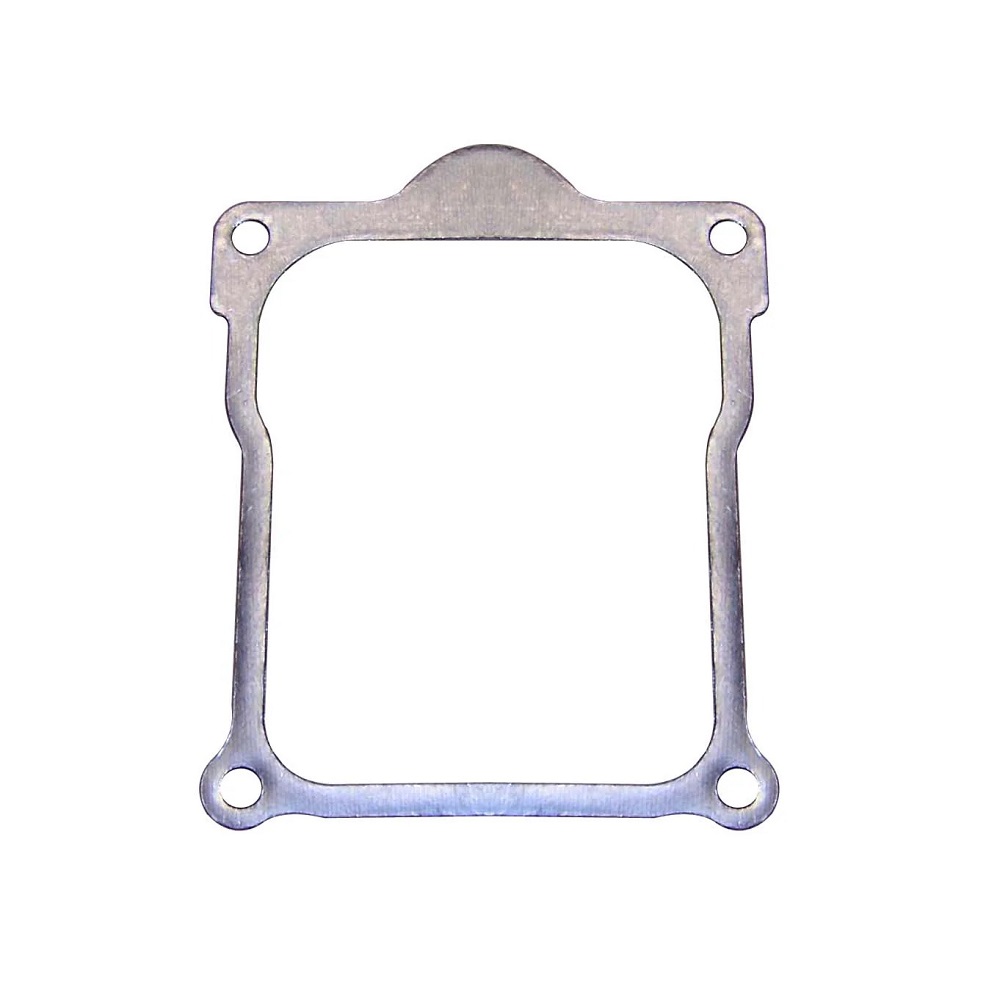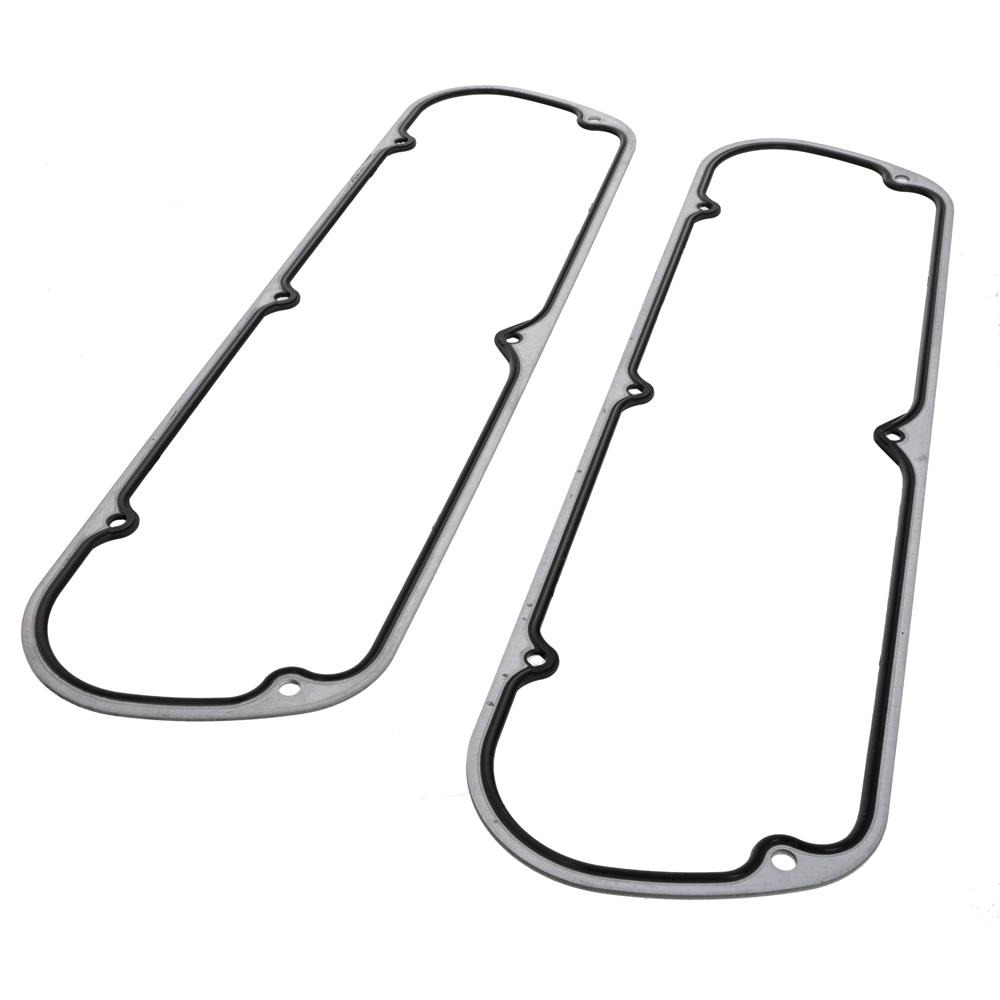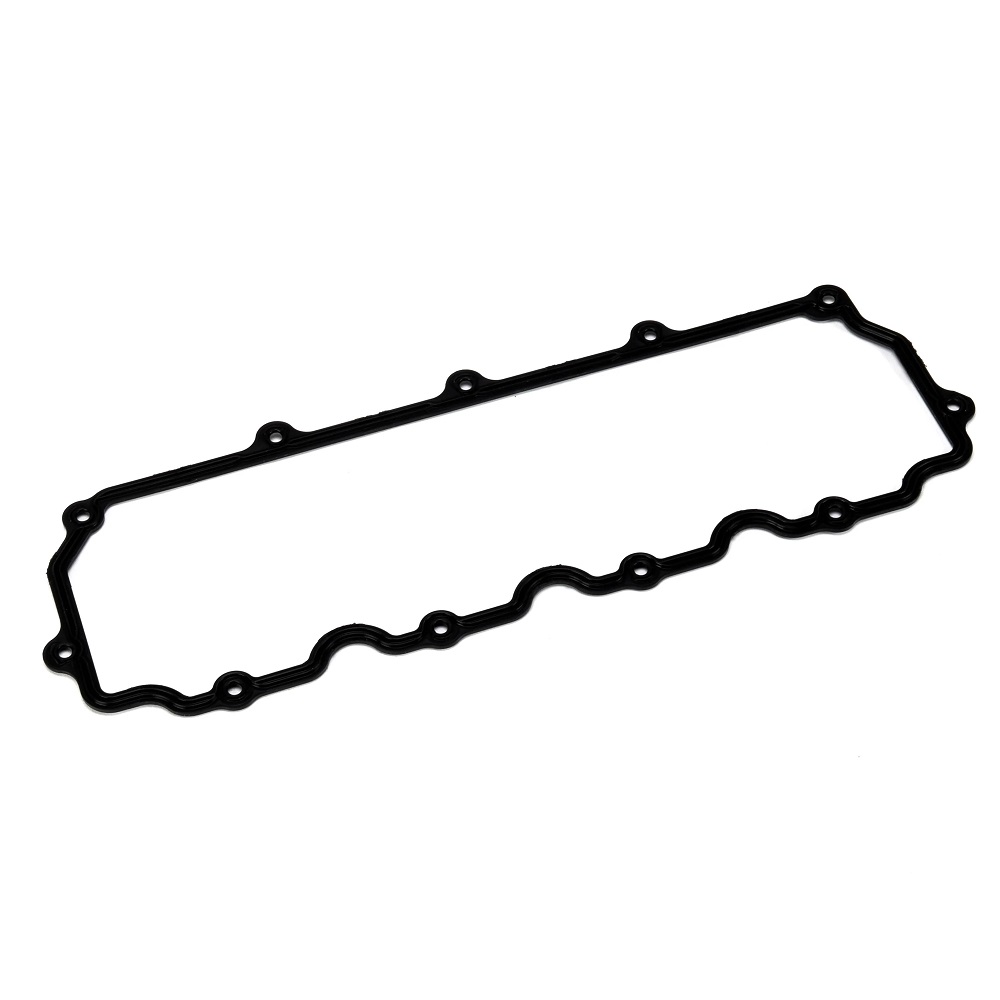The valve cover gasket is a crucial component of an internal combustion engine. It primarily serves to seal the connection between the valve cover and the engine block, preventing oil leaks and keeping the engine clean. As the vehicle ages, wear and tear may result in various issues related to the valve cover gasket. Understanding these common problems and their solutions can help vehicle owners maintain optimal engine performance. In this article, we will explore the function of the valve cover gasket, identify common problems, and discuss potential solutions.
The Importance of a Valve Cover Gasket
Basic Functionality
The valve cover gasket is responsible for sealing the area where the valve cover attaches to the engine block. It fits snugly between these two components, preventing oil from leaking out of the engine. This gasket helps maintain the appropriate oil level and pressure inside the engine, ensuring that all moving parts receive adequate lubrication.
In addition to oil sealing, the valve cover gasket also serves to keep dirt, debris, and contaminants out of the engine. A properly functioning gasket is essential for maintaining engine cleanliness and performance. Any failure in this component can lead to severe engine complications, thereby highlighting its crucial role.

Contributing to Engine Efficiency
A vital aspect of engine functionality relies on maintaining proper lubrication. Without adequate lubrication, engine parts can experience excessive wear, leading to performance loss and increased repairs. The valve cover gasket plays a significant role in this process by preventing oil leaks that could lead to a drop in oil levels.
By protecting the oil supply and helping to maintain optimal pressure, the valve cover gasket supports overall engine efficiency. When the gasket is in good condition, it allows the engine to operate smoothly, providing better performance and fuel economy. This relationship emphasizes why regular maintenance and inspections of the valve cover gasket are necessary.
Common Materials Used
Valve cover gaskets are typically made from various materials, including rubber, cork, or silicone. Each material has its pros and cons regarding durability and heat resistance. Rubber gaskets are popular for their flexibility and ability to seal well under pressure. Cork gaskets are often found in older vehicles and provide a reliable seal, though they may be less durable.
Silicone gaskets have become more common in modern vehicles due to their superior resistance to heat and chemicals. They tend to last longer than other materials and offer excellent sealing capabilities. When choosing the right valve cover gasket, consider your vehicle’s age, engine type, and environmental conditions.
Common Problems with Valve Cover Gaskets
Oil Leaks
Identifying the Issue
One of the most common issues associated with valve cover gaskets is oil leaks. Over time, gaskets can become brittle, cracked, or compressed due to heat and pressure. When this happens, oil can begin to leak from the seam where the valve cover meets the engine block.
Identifying an oil leak can often be straightforward. You may notice oil staining on the outside of the valve cover or surrounding engine areas. Additionally, a burning oil smell or warning lights on the dashboard may signal a leak. Monitoring oil levels regularly will help catch potential leaks early on.

Consequences of Oil Leaks
If left unaddressed, oil leaks can lead to engine damage and decreased performance. Low oil levels can result in inadequate lubrication, leading to increased friction and overheating. Eventually, this may cause significant engine wear and potentially costly repairs.
Furthermore, oil leaks can create messy engine bays that attract dirt and debris, ultimately complicating maintenance efforts. Addressing oil leaks promptly is essential for preserving engine health and ensuring optimal performance over the vehicle’s lifespan.
Decreased Engine Performance
Symptoms of Decreased Performance
A compromised valve cover gasket can also lead to decreased engine performance. If the gasket is faulty, it may permit oil to seep into areas it shouldn’t, causing issues such as misfires or engine hesitation. These problems may arise as oil may affect the ignition system or other engine components.
Symptoms may include rough idling, poor acceleration, or unusual noises coming from the engine. Engine warning lights may also illuminate, indicating that it is time to inspect the gasket and surrounding components.
Addressing Performance Issues
When experiencing decreased engine performance linked to a valve cover gasket, it is crucial to assess the situation promptly. Investigate the source of the problems by looking for signs of leaks or unusual wear on engine components. Depending on your skill level, you may choose to inspect the gasket yourself or consult a professional mechanic for assistance.
If the gasket is determined to be the culprit, replacing it will likely restore engine performance. Additionally, during this process, it is advisable to clean the area and check for other possible issues that may have developed because of the leak. This proactive approach will help ensure that the engine operates efficiently moving forward.
Oil Sludge Build-Up
Understanding Oil Sludge
Oil sludge is a thick mixture of contaminants and old oil that can accumulate in the engine. A compromised valve cover gasket may contribute to oil sludge buildup, particularly if the gasket allows oil to leak into the engine bay. If not regularly maintained, this sludge can negatively impact engine performance and longevity.
Sludge formation occurs when oil becomes dirty over time and fails to adequately lubricate engine components. It may cause blockages in the oil passages, leading to poor lubrication and increased friction among moving parts.

Prevention and Solutions
To prevent oil sludge buildup, regular oil changes are essential. Changing the oil and filter at recommended intervals will help to eliminate contaminants and keep the oil cycle fresh. Additionally, maintaining proper oil levels and using high-quality oil can reduce the risk of sludge formation.
If you discover oil sludge in your engine, inspect the valve cover gasket for leaks and replace it as necessary. Cleaning out the sludge may require professional intervention, and neglecting the issue can lead to costly repairs or complete engine failure.
Diagnosing and Repairing Valve Cover Gasket Issues
Inspection Techniques
If you suspect a problem with your valve cover gasket, performing a thorough inspection is vital. Start by checking for visible leaks around the valve cover and engine block. A flashlight may help illuminate hard-to-see areas. Look for oil stains or discoloration that could indicate a leak.
Next, examine the gasket itself for cracks or breaks. If the gasket appears brittle or warped, it may need replacing. Additionally, inspect surrounding components to ensure oil isn’t seeping into areas it shouldn’t be.
Replacement Process
If a faulty gasket is determined, replacing it is crucial. Begin by gathering the necessary tools, including a wrench set, socket set, torque wrench, and gasket remover. You may also need new oil and filter if any oil has leaked out.
Begin the replacement process by disconnecting the battery and removing any components obstructing access to the valve cover. Carefully take off the valve cover, and remove the old gasket. Thoroughly clean the valve cover and engine surface to remove any old gasket material and oil residue.
Install the new gasket by aligning it correctly with the valve cover and securing it in place. Reattach the cover, ensuring the screws or bolts are tightened according to manufacturer specifications to avoid leaks. Finally, reconnect the battery and check for any leaks after running the engine.
Professional Assistance
If you feel uncomfortable diagnosing or repairing the valve cover gasket yourself, seeking professional assistance is wise. Mechanics are experienced in identifying and replacing faulty gaskets and can ensure the job is done correctly. Proper installation is crucial for preventing future issues and ensuring optimal engine performance.

Proper Maintenance for Your Valve Cover Gasket
Regular Checks
To maintain the longevity of your valve cover gasket, conduct regular checks as part of your vehicle maintenance routine. Examine the gasket at least once every few months for signs of wear. Checking the oil level regularly can also provide insight into potential leaks, leading to easier identification of problems.
Keeping an eye on engine performance is equally important. If you notice increased oil consumption or any unusual noises, consider having it inspected. Staying proactive ensures you can address any issues before they lead to further complications.
Choosing Quality Gaskets
When it’s time to replace your valve cover gasket, consider investing in high-quality parts from reputable manufacturers. Cheap gaskets can lead to premature wear and may not provide the proper seal you need. Research products that come highly recommended by automotive enthusiasts or mechanics.
Quality gaskets made from durable materials like rubber or silicone can withstand heat and pressure better than lower-quality alternatives. In the long run, investing in quality parts can save you money and prevent future maintenance issues.
Maintaining Engine Health
Maintaining overall engine health goes hand in hand with caring for the valve cover gasket. Regular oil changes, using the right oil type, and monitoring fluid levels contribute to keeping the engine clean and efficient. Ensuring that all engine components are functioning correctly minimizes further wear on the gasket and surrounding areas.
Consider the overall condition of the engine to determine how best to maintain each component. Keeping the engine clean and free of sludge will further help improve the longevity and performance of the valve cover gasket.

Engaging with the Automotive Community
Connecting with Fellow Enthusiasts
Embracing the automotive community can enhance your understanding of vehicle maintenance, including the valve cover gasket. Connecting with other car enthusiasts provides access to shared experiences and insights into best practices for engine care.
Join forums, social media groups, or local car clubs, where discussions about maintenance, modifications, and repairs take place. Engaging with others allows you to gather valuable information, compare experiences, and ask questions about your own vehicle.
Participating in Workshops and Events
Consider attending local automotive workshops or events. These gatherings may cover a range of topics, including routine maintenance, performance upgrades, and engine care. Meeting with experienced mechanics and fellow enthusiasts can broaden your perspective about automotive care.
Participating in these events provides opportunities for hands-on experiences and learning new skills that can benefit you in your automotive journey. Not only will you gain knowledge, but you’ll also build lasting relationships in the automotive community.
Sharing Your Experiences
As you learn more about maintaining your valve cover gasket and other vehicle components, consider sharing your experiences. Documenting your journey through a blog or on social media can provide valuable insights to others facing similar challenges.
Engaging with others in discussions allows you to offer tips and advice while also learning from their experiences. Contributing to the automotive community fosters a supportive environment that encourages growth and education among enthusiasts.
Conclusion
The valve cover gasket plays a crucial role in maintaining engine performance and preventing oil leaks. Understanding the function and importance of this component will empower vehicle owners to make informed decisions regarding maintenance and repairs. By recognizing common problems, addressing them promptly, and performing regular maintenance, you can significantly prolong the life of your engine.
Embracing community knowledge and engaging with fellow automotive enthusiasts can enhance your experience and understanding of vehicle maintenance. As you explore the world of automotive care, remember that every small effort contributes to the overall health of your vehicle.
When you take care of your valve cover gasket, you invest in the longevity and reliability of your engine. Over time, these considerations will cultivate a deeper connection to your vehicle and appreciation for the art of maintenance. Embrace the journey of caring for your engine, fostering pride in the knowledge and skills you develop along the way!
